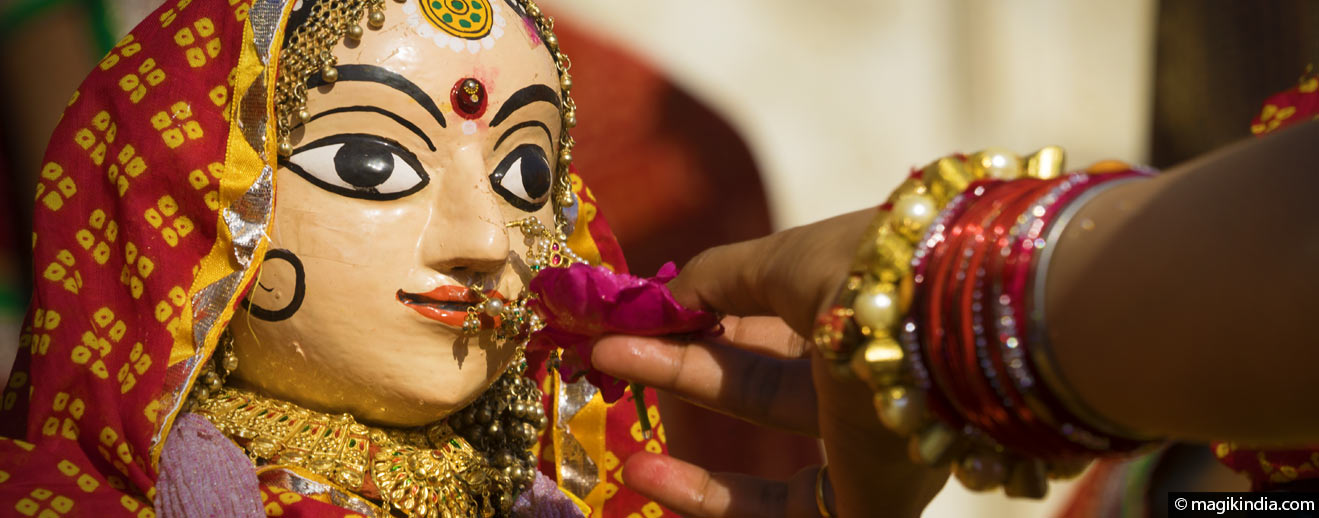
Gangaur, the women’s festival of Rajasthan
Gangaur is a colourful women’s festival that is mainly celebrated in Rajasthan. It starts in spring and lasts up to 16 days in some part of Rajasthan. It is the celebration of marital happiness. In Udaipur it coincides with the Merwar Festival.
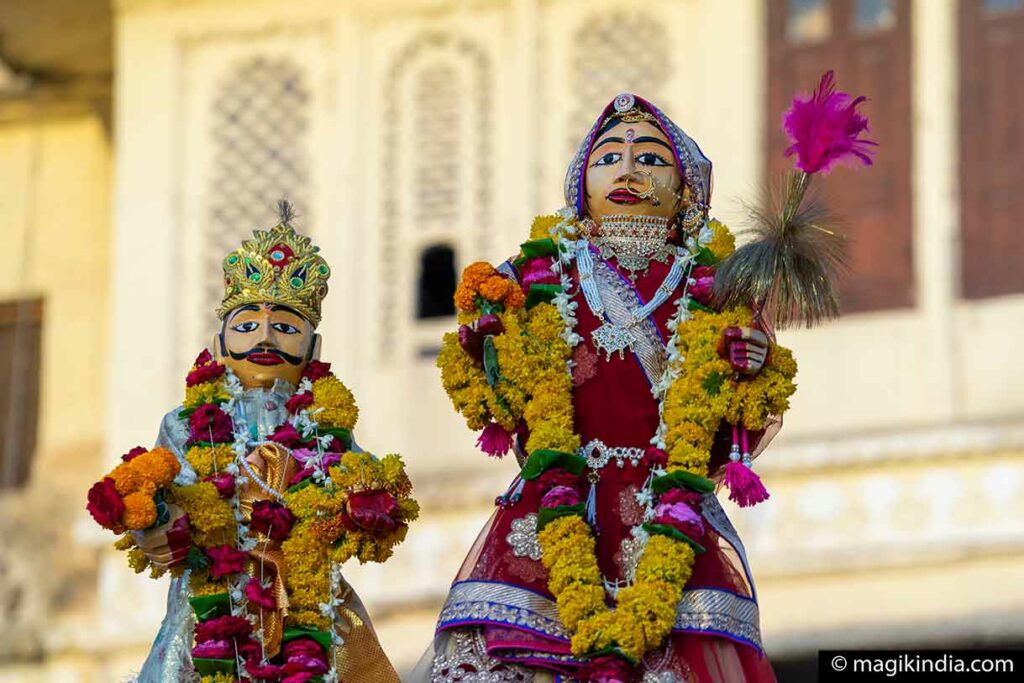
The word ‘Gangaur’ is derived from ‘Gana’, a term for Lord Shiva, and ‘Gauri’, referring to his consort Parvati. In fact the festival is mainly in honour of Gauri, symbolising conjugal happiness. Single women pray to Gauri to find a good husband while married women pray for a happy married life.
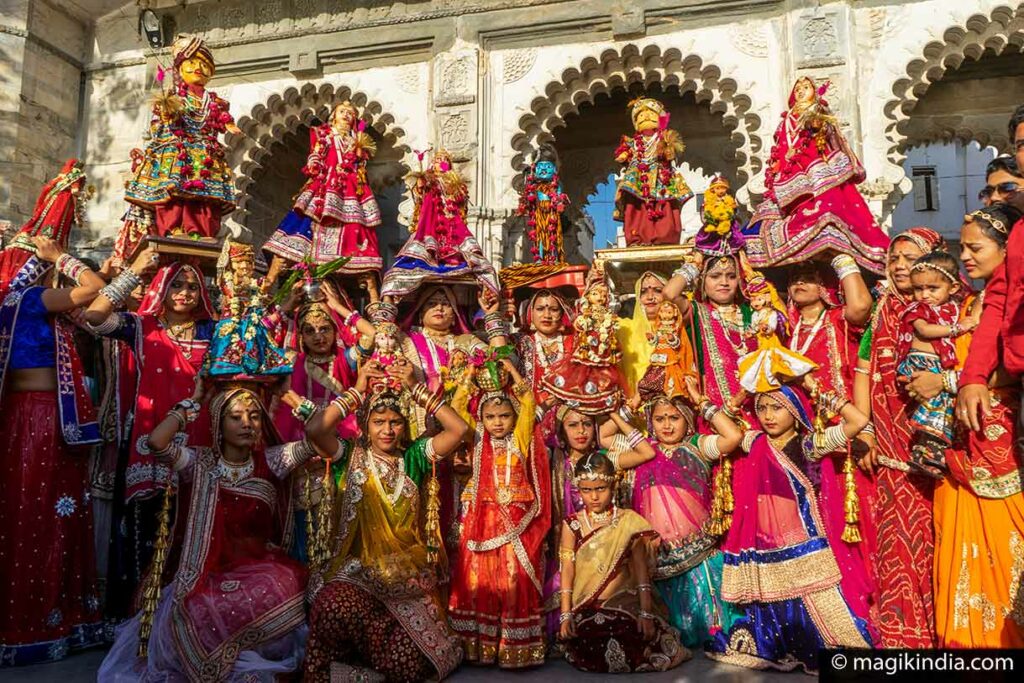
Women put on their finest jewellery for the festival, and new, colourful saris – often red, the colour of marriage in India. They decorate the palms of their hands and feet with mehndi (henna). In some areas the women and girls fast during the festival, eating only once a day.
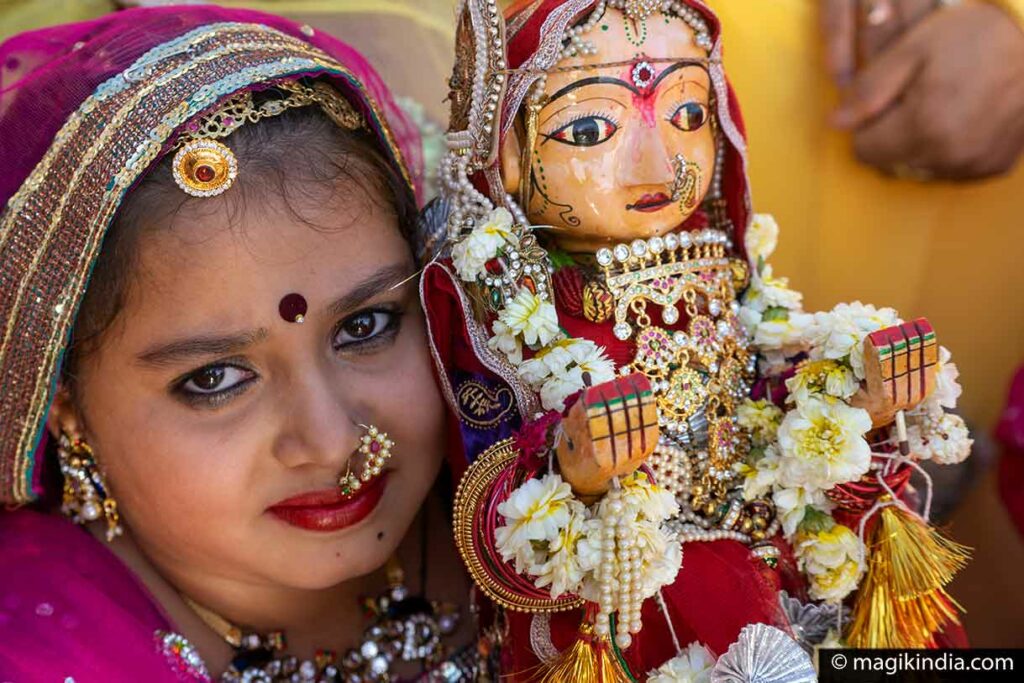
The rituals associated with this festival differ from one part of Rajasthan to another. The most famous are those of Udaipur, Jaipur and Jodhpur.
Gangaur in Udaipur

In Udaipur, Gangaur coincides with the Mewar festival, a showcase for Rajasthani culture that consists of various cultural events such as concerts and folk dance shows.
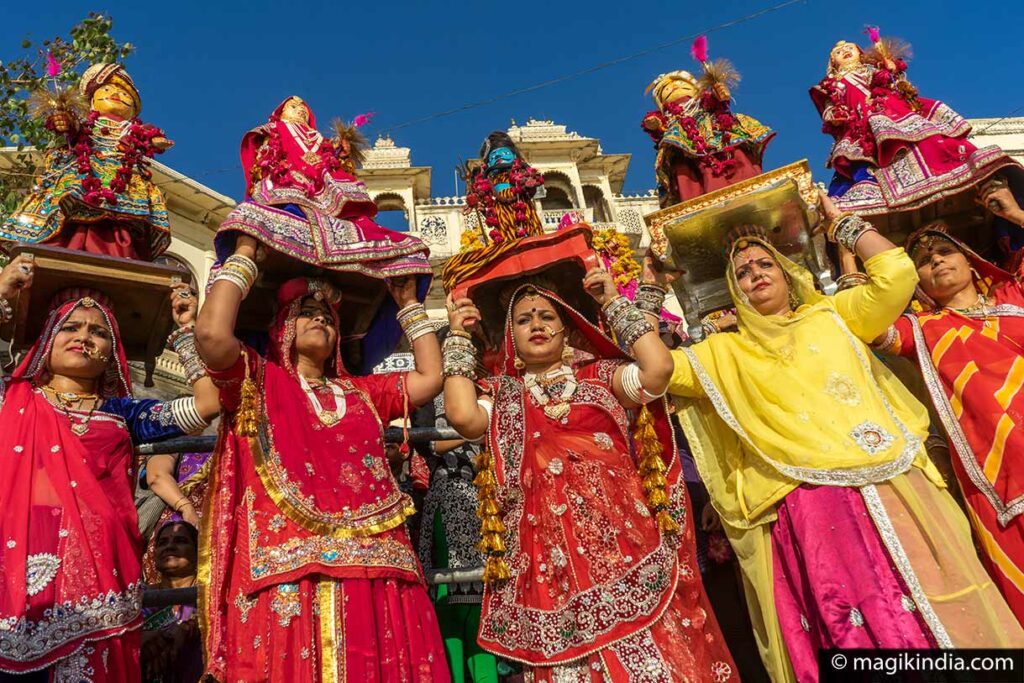
The high point is when colourful processions of women and young girls go through the streets of the old town carrying wooden effigies of Shiva and Parvati on their heads. At Gangaur Ghat the idols are set down on the steps of Lake Pichola, the women make their various offerings and carry the idols away again.
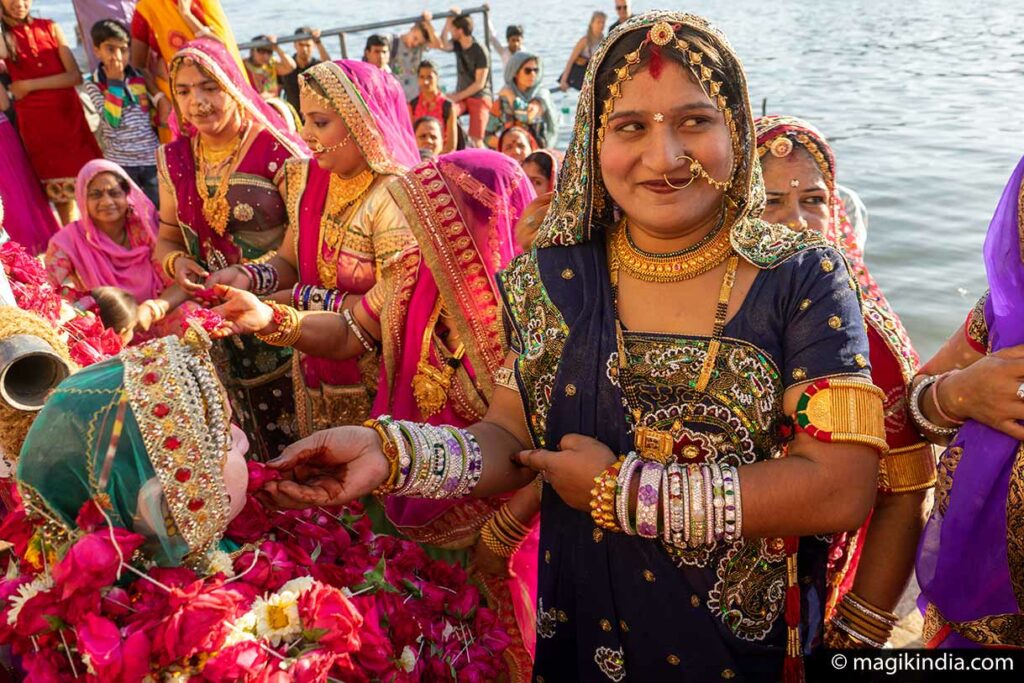
The effigies used to be immersed in the lake, but recent anti-pollution laws have put a stop to this. The Gangaur festival in Udaipur is certainly the most captivating in Rajasthan, as can be seen from the scrum of photographers elbowing each other to get good shots of the colourful festivities.
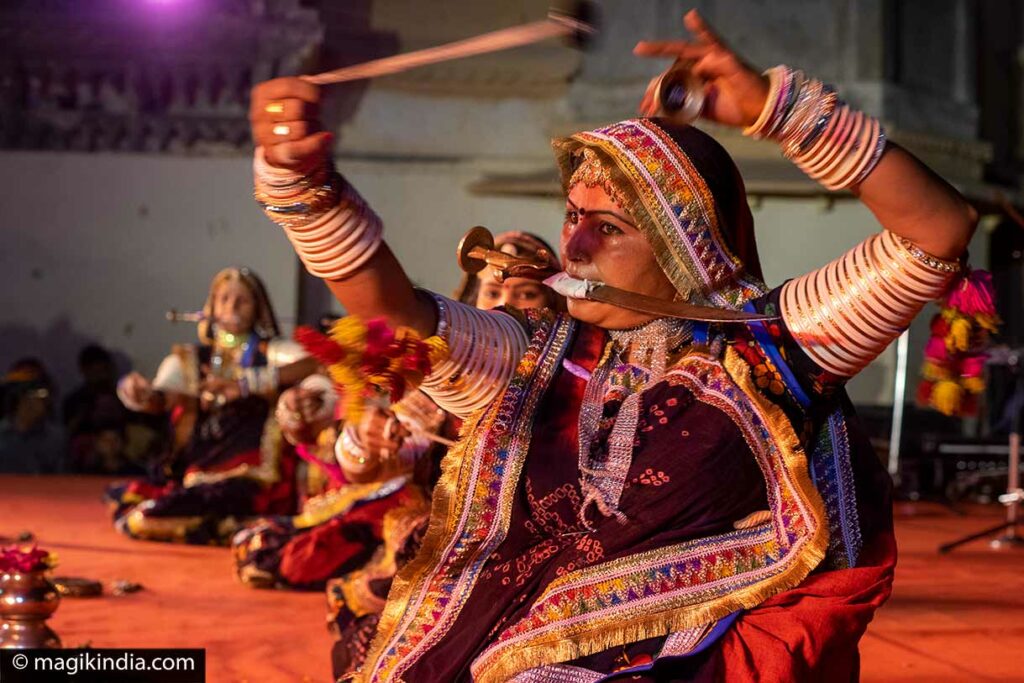
Gangaur in Jaipur
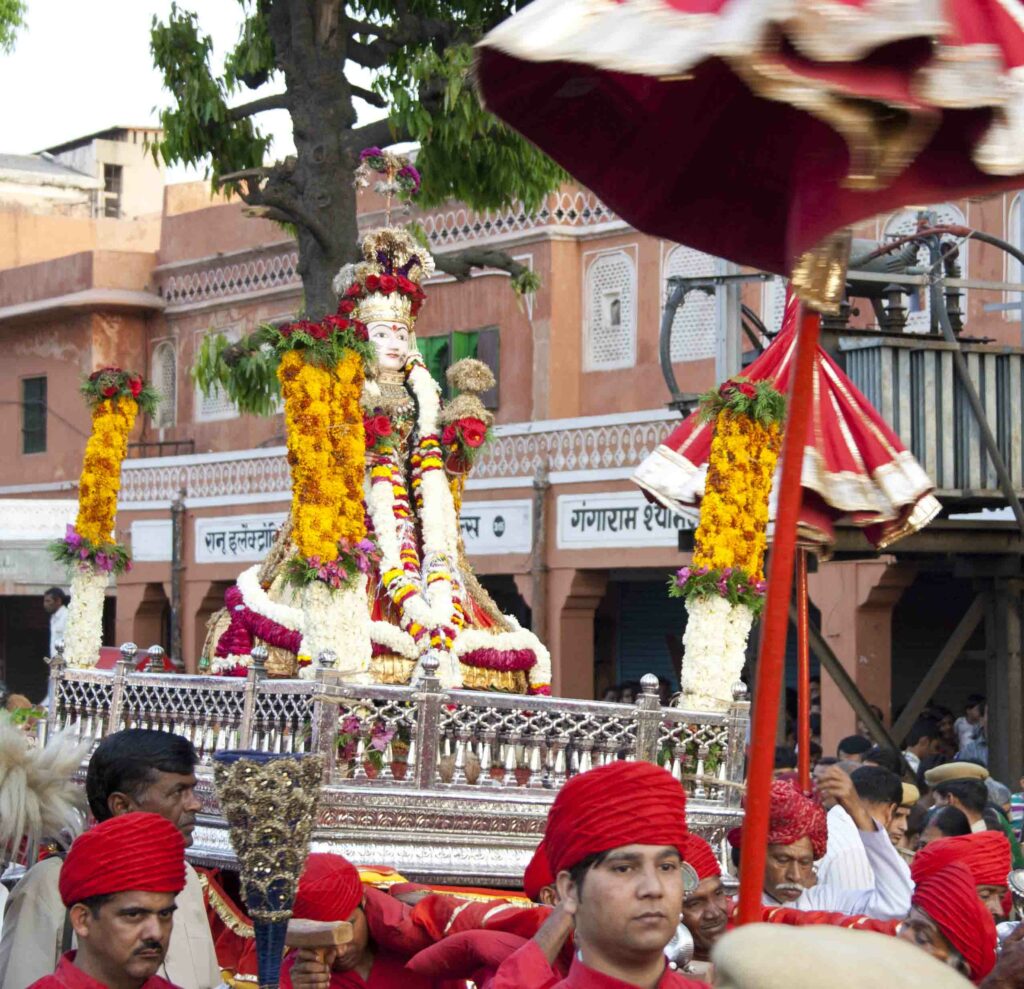
In the Rajasthan capital a big procession is held. It starts at the Zanani-Deorhi of the City Palace and ends at Talkatora. The procession consists of chariots, palanquins, decorated elephants and folk performers.
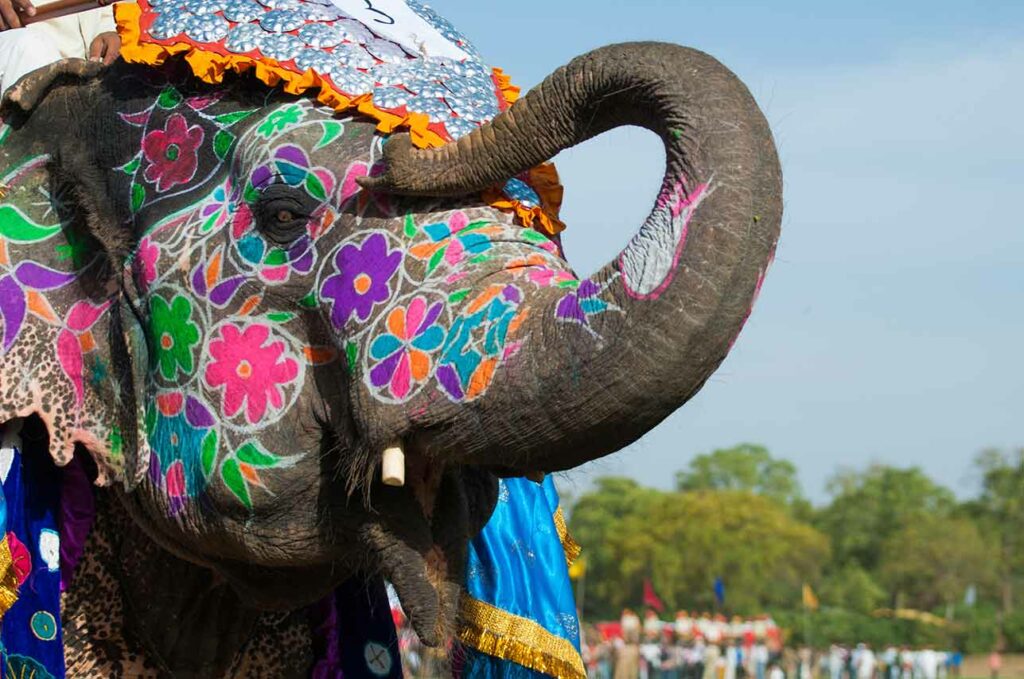
Jodhpur
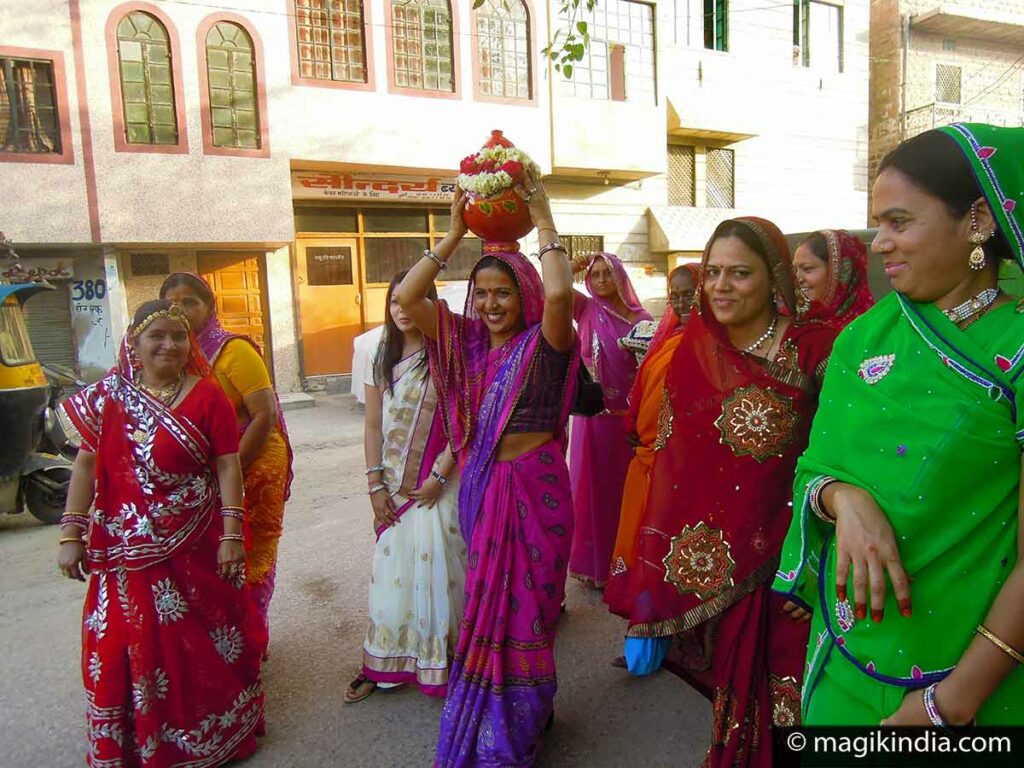
In Jodhpur, on the day after Holi the women of a household gather together before idols of Isar (Shiva) and Gauri (Parvati). If there are no such idols in the house they can be made for the occasion. Then the women take turns to sing a line of a hymn to Gauri and pray for a happy marriage.

On the evening of the 7th day the women walk in procession to the sound of drums, carrying a ghudla on their heads all the way to their home. A ghudla is an earthen pot with holes all round it and a lit lamp inside. The women sing the praises of Shiva and Parvati as they walk, and in front of their homes they dance. This ritual is repeated eight days running.

The last day is celebrated in great pomp. A band plays as the women carry pots of spring water to their homes.

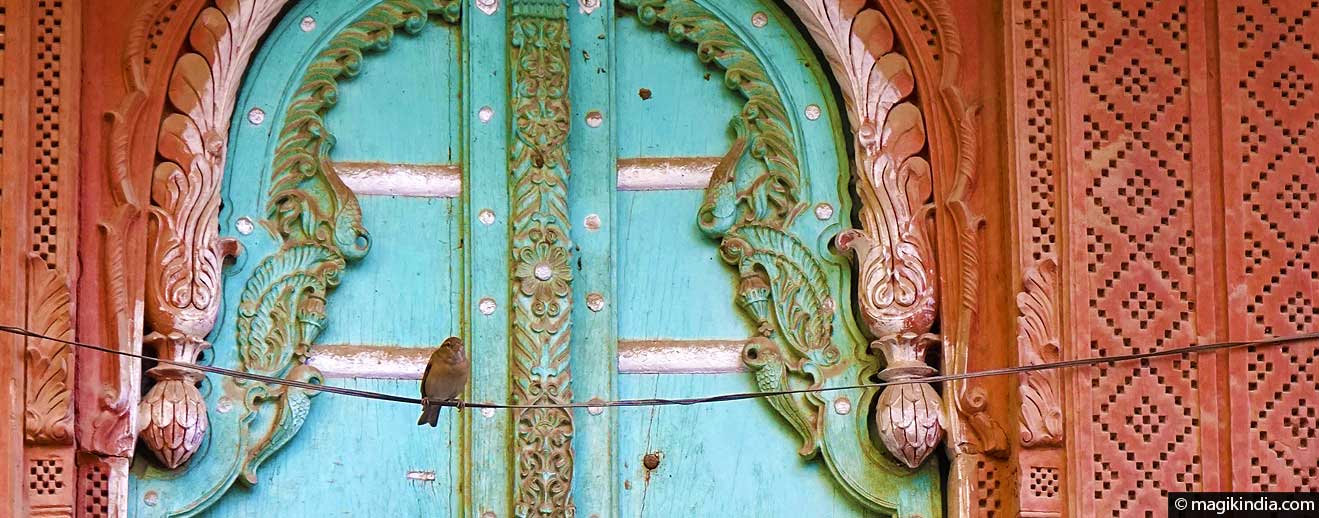


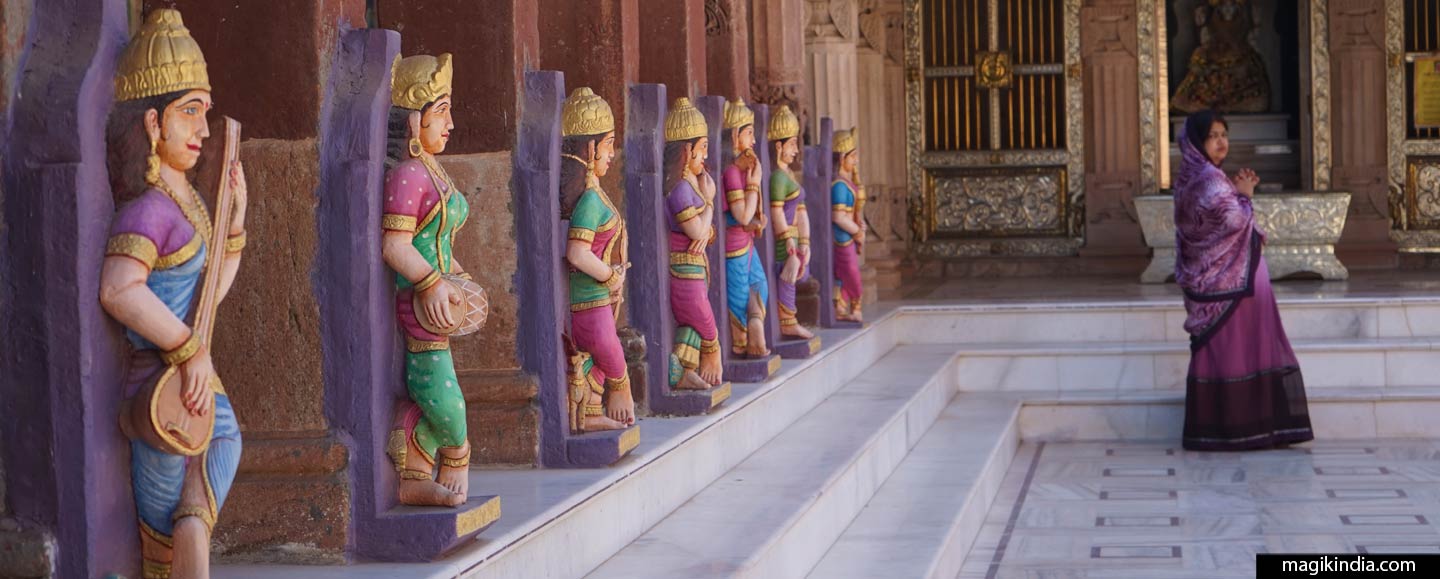
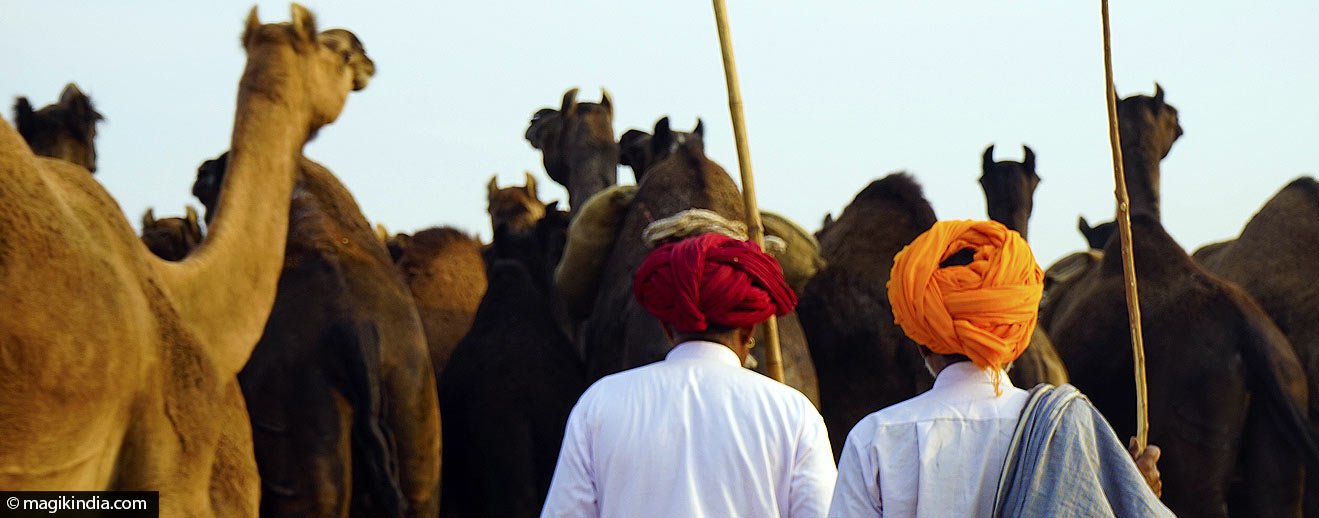

nice article
tks 🙂